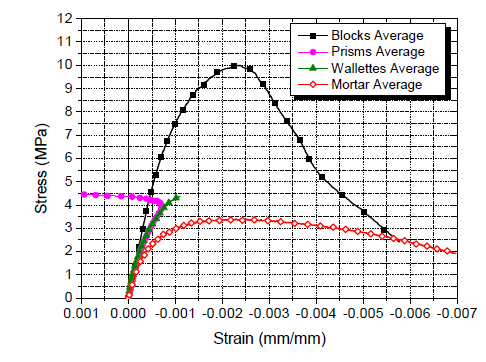1 PhD Student, EESC – University of São Paulo, Department of Structural Engineering, filizola@sc.usp.br
2 PhD, Associate Professor, EESC – University of São Paulo, Department of Structural Engineering, mcorrea@sc.usp.br
ABSTRACT
The shear strength of the vertical interfaces is a key parameter to guarantee both the flange contribution to a shear wall an d the possibility of shear force transference between interconnected walls subjected to vertical loading. In this regard, this paper presents the results of an experimental investigation to study the behavior of vertical interfaces of interconnected concrete and clay blockwork masonry walls. F our series of tests in H-shaped specimens were conducted to determine the bonding pattern effect (running bond and U- steel anchor) on the shear strength of the web-flange connection. Face shell bedding was us ed to construct the specimens. The specimens were vertically loaded on the web with a uniformly distributed pressure. Strains, displacements, cracks and the ultimate load were analysed and the shear strength was compared with experimental results obtained by other researchers and with value s reported in NBR 15812 -1 (2010), NBR 15961-1 (2011), AS 3700 (2002) and CSA S304 .1 (2004). The experimental results showed that the type of connection can significantly influence the shear strength of vertical interfaces and that there are characteristic values which are larger than those currently adopted by several codes.
KEYWORDS: masonry, concrete block, clay block, shear strength
291.pdf



